-
First responders could be zipping through skies within two years
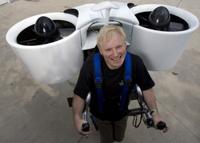
Glenn Martin, the inventor of the Martin Jetpack, the world’s first commercially available jetpack, recently spoke with Homeland Security NewsWire’s executive editor Eugene K. Chow; in their interview Martin discusses the technical challenges of developing a viable jetpack, its uses in emergency response, and when we can expect to see civilians zipping through the skies
-
-
World’s first magnetic soap can clean oil spills
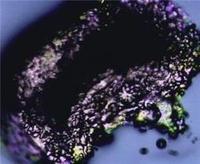
A University of Bristol team has dissolved iron in liquid surfactant to create a soap that can be controlled by magnets; the discovery could be used to create cleaning products that can be removed after application and used in the recovery of oil spills at sea
-
-
Shrew whiskers inspire robot design
The Etruscan shrew is nocturnal, relying on its whiskers to find, track, and capture its prey; the efficiency of this tiny creature has inspired scientists to look at ways of replicating the shrew’s whiskers to enable robots to find their way around without the use of vision
-
-
Mysterious flotsam in Gulf came from Deepwater Horizon rig
Scientists track debris from damaged oil rigs, helping forecast coastal impacts in the future
-
-
New robot for search-and-rescue missions
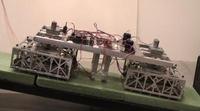
Scientists say the best way to design a new machine is to emulate the locomotion of a certain type of flexible, efficient animal
-
-
Slowing down sea-level rise vs. reducing surface temperature change rate
Scientists say that reducing the amount of solar radiation hitting Earth (for example, by satellites that block the sun, making the Earth’s surface more reflective, or emulating the effects of volcanoes by placing aerosol particles in the upper atmosphere) would be a cheaper way to halt or reverse climate change than reducing carbon dioxide emissions
-
-
Improving autonomous navigation in challenging conditions
Researchers work on developing an advanced sensor fusion system for the Department of Defense that will increase high-speed obstacle detection range; results of this work should open up new possibilities for deploying autonomous vehicles for missions that demand navigating at higher speeds in unstructured environments
-
-
La Nina weather pattern may lead to flu pandemics?
Pandemics of influenza around the world caused widespread death and illness in 1918, 1957, 1968, and 2009; a new study examining weather patterns around the time of these pandemics found that each of them was preceded by La Niña conditions in the equatorial Pacific
-
-
Walden University offers M.S. in Emergency Management
The school says that this new online master’s degree program emphasizes key skills related to creating and implementing disaster prevention and response plans
-
-
Digital images used to prevent bridge failures
A new/old method has been developed to assure the safety of hundreds of truss bridges across the United States; researchers have been testing the use of a thoroughly modern version of an old technique — photographic measurement or “photogrammetry” — to watch the failure of a key bridge component in exquisite detail
-
-
Scientists study how nature cleans uranium from aquifer
A small town in Colorado was the site of uranium ore processing in the 1940s and 1950s, producing yellowcake; when the mills shut down, the mill tailings — a crushed rock byproduct of ore processing — were left behind on the north bank of the river; the tailings were hauled away in the 1990s, but a large amount of uranium that seeped out of the tailings remains as a contaminant in the aquifer and is slowly being released into the Colorado River
-
-
App-enabled robocopters to bring supplies to Marines
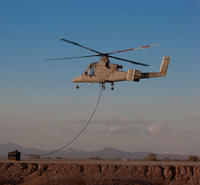
Marines running low on ammo may one day use an app on their digital handhelds to summon a robotic helicopter to deliver supplies within minutes; the Navy officials in charge of the program are seeking researchers who will develop threat- and obstacle-detection and avoidance systems, as well as autonomous landing capabilities that can operate across different types of aircraft
-
-
Helping UAVs to land safely in an emergency
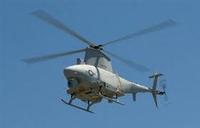
One obstacle to the wider use of UAVs in domestic missions such as law enforcement is the fact that UAV flight plans are set pre-flight, and if something goes wrong and they need to land they have no way to determining where the safest landing spot is; in most cases they just drop; engineers are developing a system which will allow UAVs sense and avoid other traffic and determine appropriate landing spots should the need arise
-
-
Military seeking high-pressure materials without high-pressure processes
Military missions place tremendous stress on the materials used for defense weapons, vehicles, and other applications; applications range from stronger armor, to lighter weights which allow for faster propulsion, to greater resiliency in aerospace, ground, and naval platforms
-
-
New material for building thermonuclear fusion reactors
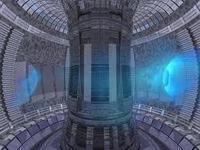
Two European projects – ITER and DEMO — propose development of fusion reactors that are economically viable; this work depends on the development of new structural materials capable of withstanding damage by irradiation and elevated temperatures resulting from the fusion reaction
-
More headlines
The long view
New Technology is Keeping the Skies Safe
DHS S&T Baggage, Cargo, and People Screening (BCP) Program develops state-of-the-art screening solutions to help secure airspace, communities, and borders
Factories First: Winning the Drone War Before It Starts
Wars are won by factories before they are won on the battlefield,Martin C. Feldmann writes, noting that the United States lacks the manufacturing depth for the coming drone age. Rectifying this situation “will take far more than procurement tweaks,” Feldmann writes. “It demands a national-level, wartime-scale industrial mobilization.”
How Artificial General Intelligence Could Affect the Rise and Fall of Nations
Visions for potential AGI futures: A new report from RAND aims to stimulate thinking among policymakers about possible impacts of the development of artificial general intelligence (AGI) on geopolitics and the world order.
Smaller Nuclear Reactors Spark Renewed Interest in a Once-Shunned Energy Source
In the past two years, half the states have taken action to promote nuclear power, from creating nuclear task forces to integrating nuclear into long-term energy plans.
Keeping the Lights on with Nuclear Waste: Radiochemistry Transforms Nuclear Waste into Strategic Materials
How UNLV radiochemistry is pioneering the future of energy in the Southwest by salvaging strategic materials from nuclear dumps –and making it safe.
Model Predicts Long-Term Effects of Nuclear Waste on Underground Disposal Systems
The simulations matched results from an underground lab experiment in Switzerland, suggesting modeling could be used to validate the safety of nuclear disposal sites.
